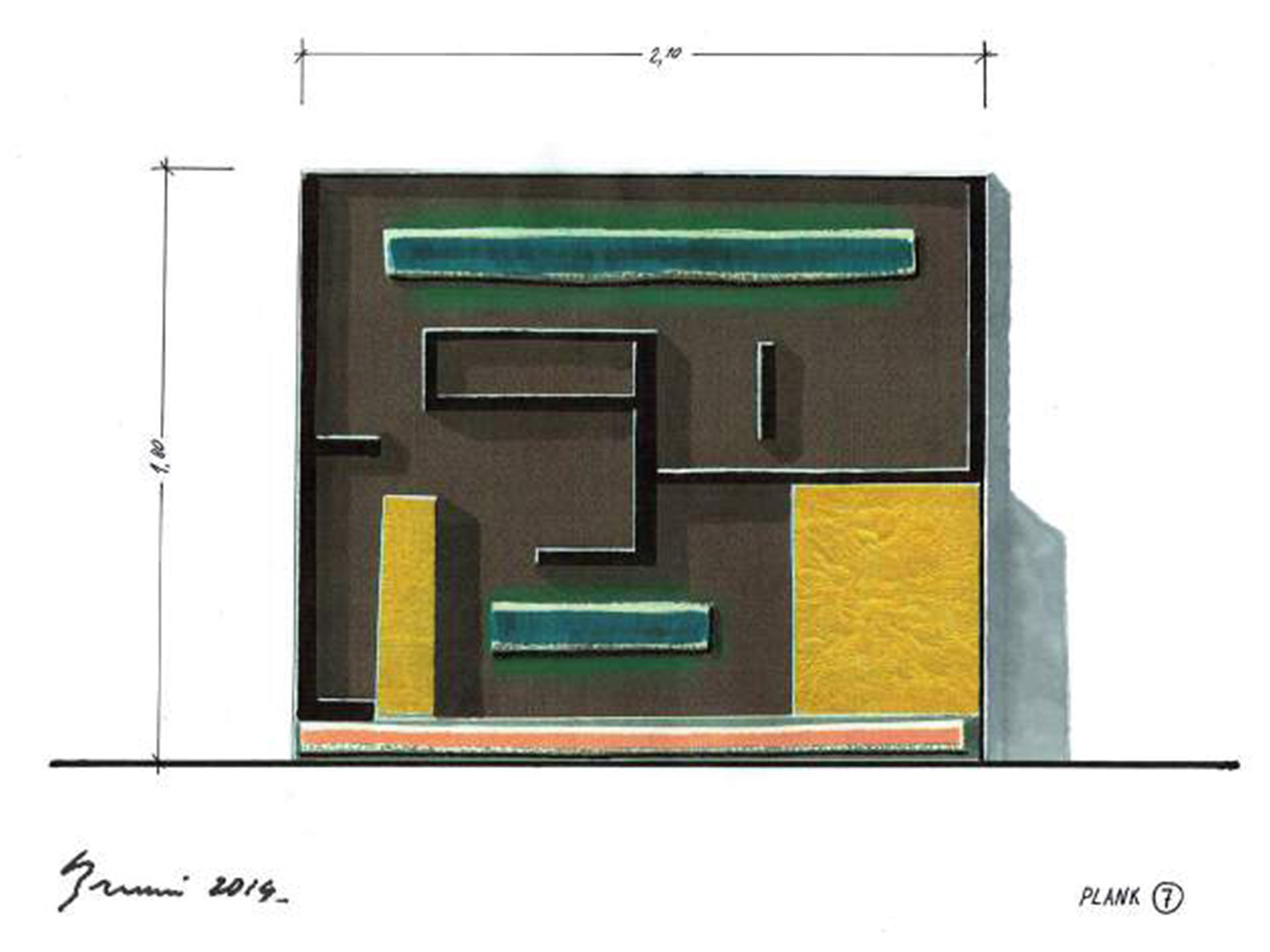Trees, 2010-2011
When birch tree forests are culled or agricultural cultivations of fruit trees are pruned, their branches and trunks are dispersed or burned. I have always been fascinated by these segments of nature, which continue to release a great expressive force, even more powerful when they are combined with modern, perfect and industrial materials; they become mysterious, always diverse, unique, unrepeatable and somewhat sacred presences.
Trees, trunks and branches are part of our ancient lore but also of present-day culture, because in the age of globalization, design seeks to reclaim recognizable ‘anthropological’ platforms. The Trees series consists of simple household objects, in which books, and images find their place next to the strange presence of branches and trunks, like in the reality of the world.
—Andrea Branzi
Stones, 2011
Stones is a collection of unique pieces, consisting of bases and volumes in black metal incorporating logs of raw wood that support stones. The idea was to bring design closer to art, sculpture, and archetypal, primordial symbols. Testifying to the neo-primitive condition of contemporary man.
—Andrea Branzi
Plank, 2014-2015
The Animali Domestici series was the starting point for an investigation into new archetypes, which means very simple languages that however express a great universal communicative strength. Throughout the twentieth century, the neoplastic code, based on prisms, spheres, straight lines and planes, constituted a kind of archetypal repertoire applied to industrial prototypes. Once that code, born in the age of mechanics and early machines, ceased to be considered valid, the 21st century ushered in the hypothesis of elaborating linguistic codes based on new logics, yet endowed with the same capacity for recognition.
The Plank series also stems from that idea, coupling natural elements like raw wood branches and industrial grade metal carpentry. The objects thus created are hybrid products, balancing contrasting concepts like technique and nature, and spontaneously forming a diversified series, that is to say, objects that are partly mass-produced, therefore serially identical, and partly completely different, because in nature things never form identically among themselves, thus making the tree branches a naturally diversified series.
Consequently, nature, technique, animals, physiology, archetypes, all coexist in a kind of integrated condition, which Pierre Restany called neo primitive because similar to the condition in which the Indigenous Amazonians live, in which nature, magic, medicine, hunting, religion and technology belong to a single sphere of integrated reality experience.
—Andrea Branzi










